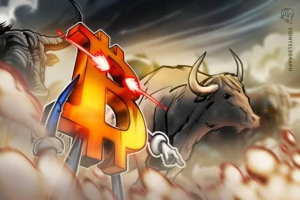In recent discussions on the future of finance, Tracy Jin, chief operating officer at a renowned crypto exchange, shed light on the potential dangers of tokenizing real-world assets (RWAs). While stablecoins currently dominate this innovative financial landscape, boasting a market cap exceeding $227 billion, Jin warns that rising centralization could mitigate the benefits expected from this technology.
During an enlightening interview, she articulated concerns regarding the centralized risks associated with asset tokenization. Jin notably emphasized that as long as tokenized assets are subjected to state regulations and centralized intermediaries, we might just be rebranding existing financial infrastructure. “Tokenization will simply be a new version of old financial systems and not a genuine financial revolutionary model,” she stated.
Jin’s insights unveil a crucial aspect of RWA tokenization: centralization breeds censorship and liquidity challenges. In politically unstable environments, the risk of asset confiscation escalates, which could deter potential investors. She pointed out that properties or companies linked to tokens in volatile legal jurisdictions face an increased threat of being seized by multiple authorities.
Despite the challenges posed by centralization, industry forecasts suggest that RWA tokenization could evolve into a multi-trillion dollar sector within a decade. Currently, approximately $19.6 billion worth of tokenized real-world assets exist on-chain, representing a mere fraction of the potential market. With projections indicating that the RWA sector could expand anywhere from $4 trillion to $30 trillion by 2030, the stakes have never been higher.
Participants in financial studies, including major institutions, have varied outlooks on this rapid growth. Notably, while McKinsey & Company foresees modest growth between $2 trillion to $4 trillion, others like Standard Chartered predict a possible surge to $30 trillion. Tokenized assets encompass stocks, bonds, real estate, intellectual property rights, and more, primarily relying on blockchain technology, which promises to enhance money circulation and capital market accessibility globally.
In conclusion, as the tokenization of RWAs continues to gain traction, stakeholders must navigate the balance between innovation and risk. The future of finance is undoubtedly being shaped by these emerging technologies, but with potential pitfalls looming large, a careful and informed approach will be essential for realizing their full benefits.



